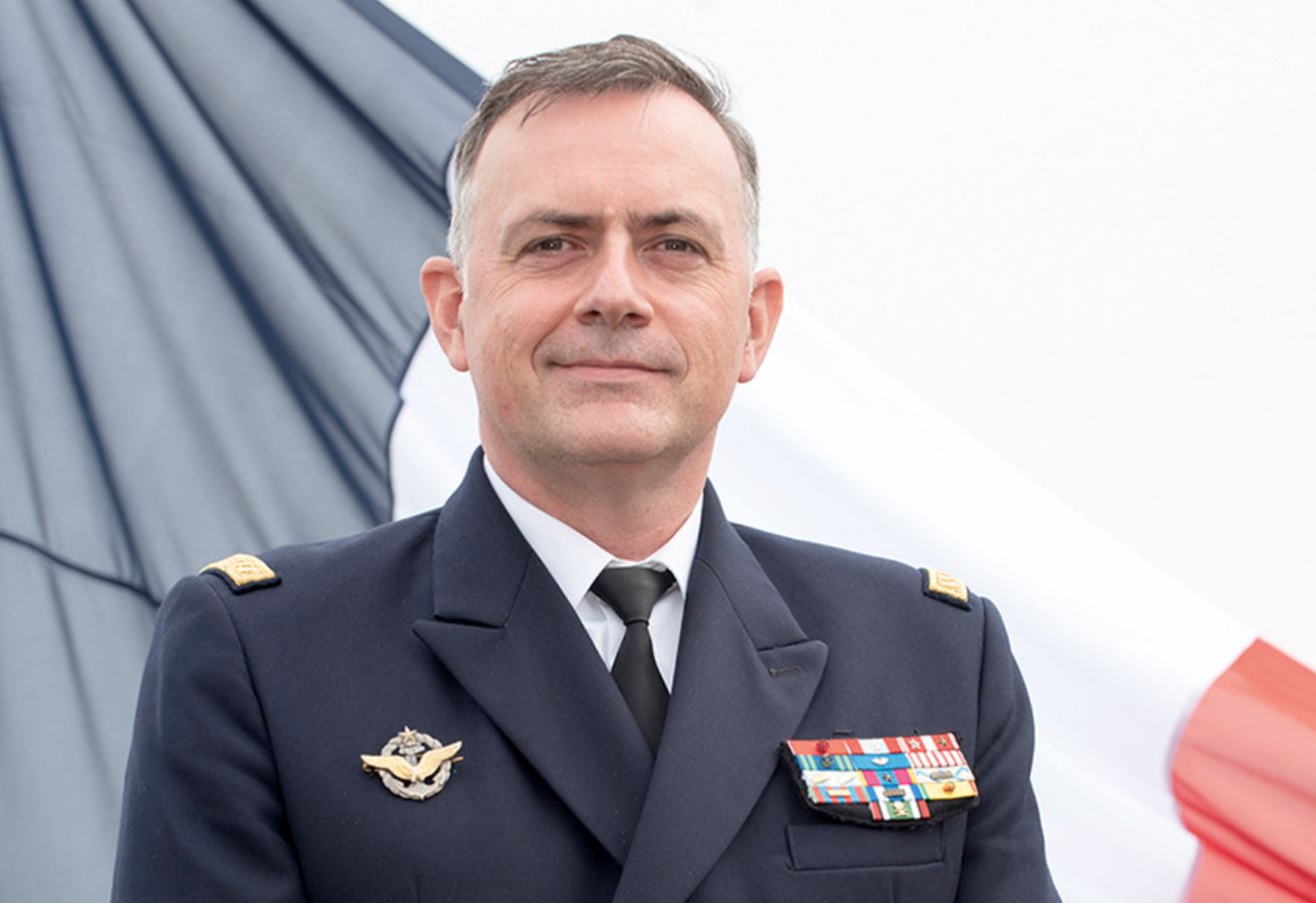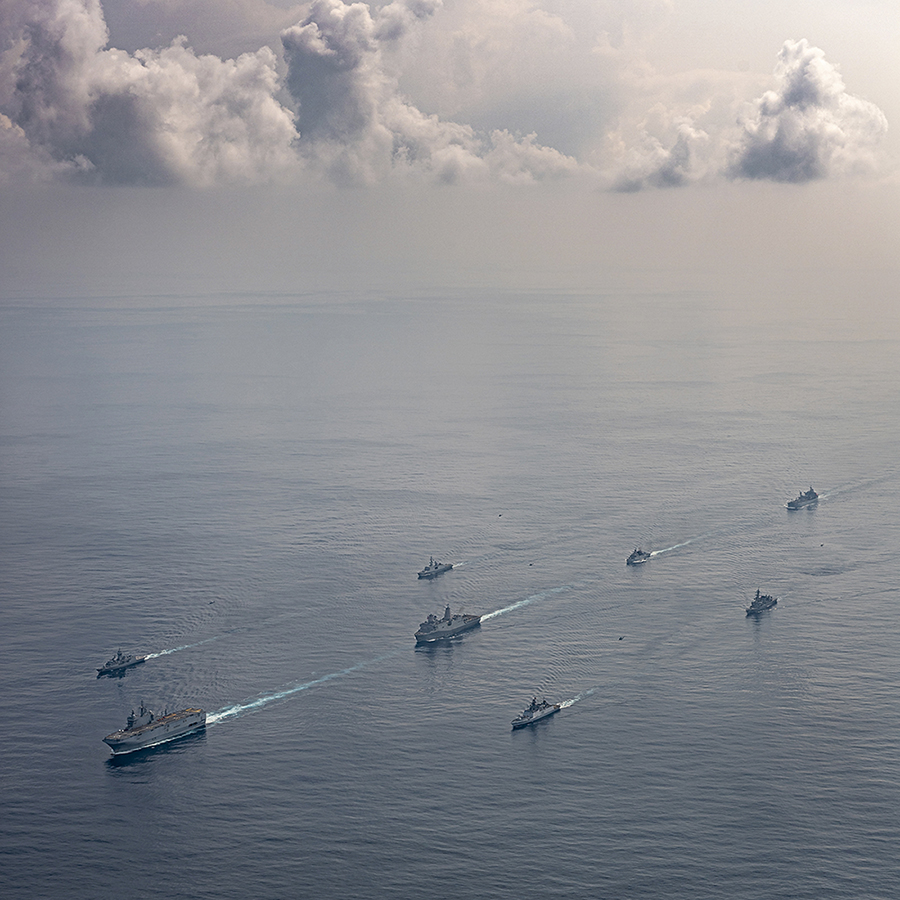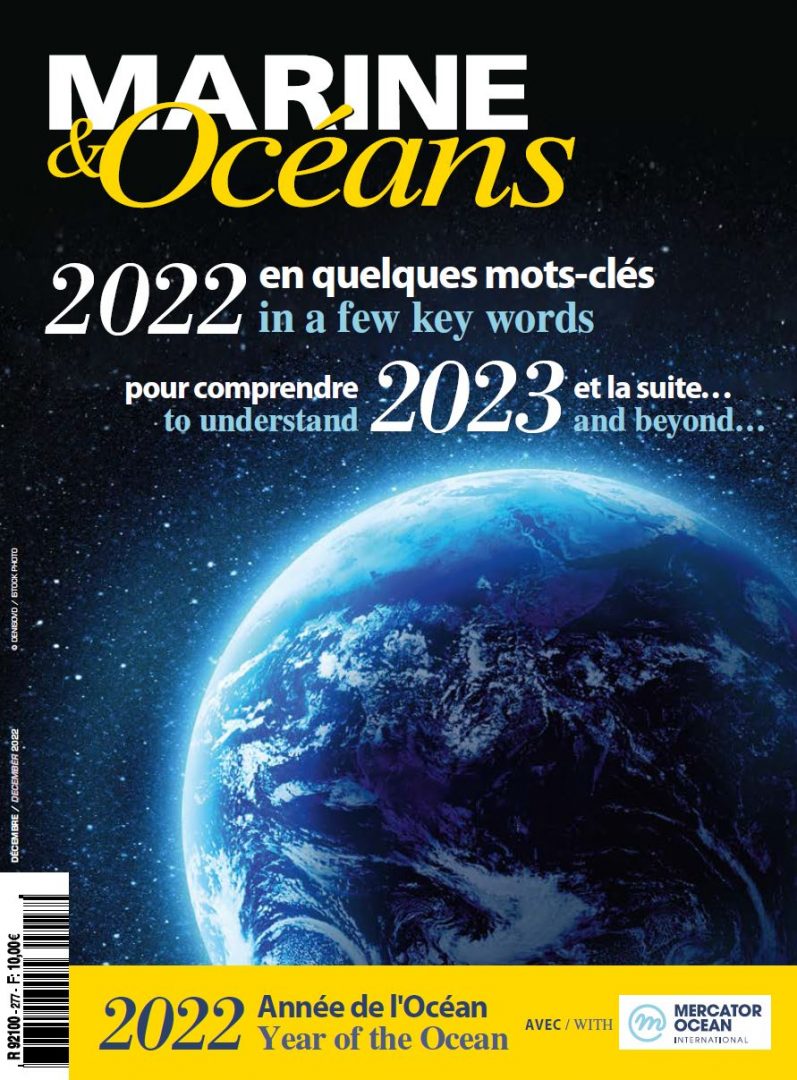We can deploy a warship or an aircraft, in less than 24 hours, anywhere in the Indian Ocean.
Interview by Bertrand de Lesquen

This year, France is taking over the Chair of the Indian Ocean Naval Symposium (IONS). What does it mean and what does it represent?
The IONS is a multinational initiative, launched by the Indian Navy in February 2008, which has been seeking to develop maritime cooperation in the Indian Ocean. Relationships between states are based on the principle of equal treatment and the search for consensus. In this way, the chairman coordinates the discussions, but has no decision-making function. Chairs are attributed successively, on the basis of an equitable geographical distribution. The objective of France is to give the symposium a more operational dimension, through the implementation of more concrete naval operations. In this respect, the French Navy put on the agenda the issue of environmental security, which is shared by all the littoral states of the Indian Ocean and which will be addressed, starting this year, in our discussions as well as in the working groups.
How does the IONS work exactly, and what is its function?
Navies of the Indian Ocean region need to meet regularly to learn about each other, to exchange on common issues, to share their visions and their methods. The symposium allowed to created this community of exchanges. Three working groups meet over the year on the following issues: HADR (Human assistance and disaster relief), ISI (information sharing and interoperability), and maritime security. The proceedings of these discussions are useful to the development of our cooperation. After 13 years of existence, the IONS gathers nearly all the littoral states of the Indian Ocean[1], as well as observer states[2]. I welcome the remarkable initiative of India, which is a real success. This exceptional forum is particularly precious in these fast-moving times.
What does the French Navy represent today in the Indian Ocean in terms of bases and staff?
The French Navy is present in the Indian Ocean operating sovereignty forces based in the FAZSOI[3], located in La Réunion, Mayotte, the Scattered Islands and the TAAF[4], in the FFDJ (French forces in Djibouti) and in the FFEAU (French forces in the United Arab Emirates). In addition to these permanent forces, occasional forces can be deployed depending upon the requirements of our missions, such as the embarked air group “Jeanne d’Arc”, or frigates deployed in the framework of the Taskforce 150. Without including these non-permanent forces, it represents some 600 seafarers deployed in the area. Our permanent capacities allow us to deploy a warship or an aircraft, in less than 24 hours, anywhere in the Indian Ocean.
What are the main threats in the region, and consequently, what are the missions of the French Navy?
The Indian Ocean is full of multiple fishery or mineral resources. Being particularly coveted, these resources are at the origin of tensions which are not likely to decrease in the coming decades. The French Navy’s mission consists in protecting the resources under French sovereignty, patrolling within France’s EEZ and controlling ships that carry out illicit activities.
The Indian Ocean is also a place of intense maritime traffic concentrated in the straits[5] which are compulsory transit corridors. International tensions are frequently observed in these straits where navies are deployed to defend freedom of circulation as defined in international treaties. Its participation in the Agenor mission[6] is an example.
Terrorism is also a threat, as the recent destabilisation of the Gulf of Mozambique, since the end of March, reminds us. By seizing the port of Palma, the Al-Shabab jihadists forced the Total group to evacuate its Afungi gas site. Every day, the French Navy contributes to the fight against terrorist groups, whose human and technical means transit by sea, as do the illegal activities that contribute to their financing, especially drug trafficking.
When deployed in the area, the French Navy supports the operation Atalanta[7] that contributed to contain piracy[8]. The last recorded action of piracy occurred in April 2019. Yet, suspicious attempts are still observed and it is very likely that reducing this dissuasive naval presence would allow piracy to rise again.
Over the past two years, the north of the Indian Ocean has also been the scene of discreet and unclaimed offensive actions against merchant vessels. This is one of the visible sides of the operations conducted in the grey zone that define our new geopolitical cycle. The French Navy deploys ships, aircraft or submarines to maintain an autonomous situational awareness capability and to be able to correctly analyse and assign these hybrid actions.
Finally, climate change is the source of many threats to the coastal states of the Indian Ocean. Biological, oceanographic, geographical, biochemical or climatic, the range of potential risks associated with these phenomena is worrying. The French Navy is at the forefront of the battle for environmental security. It has multiple observatories as well as a long experience in the field of support to scientific research and biodiversity monitoring[9]. It hopes to bring the navies of the Indian Ocean in its footsteps.

“France must assume (editor’s note: in the Indo Pacific region) the role of a mediating, inclusive and stabilising power”, President Emmanuel Macron said in Sydney, Australia, in 2018. Concretely, how is this implemented by the French Navy in the Indian Ocean?
The French Navy is one of the key elements of France’s strategy in the Indo-Pacific region, which is mainly covered by the seas. The IONS reflects this search for mediation, inclusion and stabilisation called for by the President of the Republic. We carry out more and more bilateral and multilateral exercises with our privileged partners to increase our interoperability, while seeking to avoid any escalation by cooperating with our competitors on appropriate issues.
The French President also pointed out the importance of a “trilateral discussion with Australia, India and France”. What sort of relationships does the French Navy have with these homologues, and for which objectives?
The French Navy is deeply involved in strategic partnerships with Australia and India. Every year, joint exercises are being conducted with the navies of both countries[10], which are two major actors in the process of maintaining stability in the Indian Ocean. France contributes to strengthening their sovereignty through armaments cooperation.
Are we witnessing an increase in the development of naval forces in the Indian Ocean, and if yes, which form does this process take?
The military development of maritime areas is particularly obvious in the Indian Ocean. The thalassocratic orientation of China resulted in the building of a military port base in Djibouti, in a massive development of its naval means and in a growing presence at sea, which, in response, led the neighbouring nations to rearm. The number of frigates and submarines of the neighbouring countries in the area is constantly increasing. In this environment of potential escalation, the French Navy’s mission consists in trying to limit tension, but also to get prepared in case of potential armed conflict. France, and Great-Britain now – after years of absence, deploy units in the Indian[11] and Pacific[12] Oceans several times each year. Besides, other navies in Iran, Ethiopia and Egypt are now in a process of modernisation or development.
In last February, the United Nations officially launched the Decade of Ocean Science for Sustainable Development (2021-2030). What is the French Navy’s contribution to the preservation of biodiversity, of fishery resources, etc. in waters under French jurisdiction?
The French Navy provides logistical support for scientific research operations in the TAAF[13] through several yearly deployments. In partnership with the OFB[14], the French Navy recently conducted scientific missions in the French West Indies (“An Ba d’Lo”) and in the Pacific (“Kivi Kuaka”). A similar mission will soon be carried out in the Indian Ocean from La Réunion.
It also fights against illegal fishing and overfishing in cooperation with other nations. By sharing maritime information within the IFCs[15], it contributes to maritime security and to the prevention of accidents and pollution. And finally, France maintains a permanent presence of units deployed as a network of observatories to monitor the consequences of climate change, to help prevent them, and to assist populations if necessary.
[1] South Africa, Saudi Arabia, Australia, Bangladesh, United Arab Emirates, France, Indonesia, Iran, Kenya, India, Malaysia, Maldives, Mauritius, Mozambique, Oman, Pakistan, the United Kingdom, Seychelles, Singapore, Sri Lanka, Tanzania, Thailand, East Timor, and soon Qatar.
[2] Germany, China, Spain, Italy, Japan, Madagascar, the Netherlands, Russia.
[3] Armed forces in the south Indian Ocean region.
[4] French Austral and Antarctic Territories.
[5] This is not new: for example, the Strait of Malacca was already an area of intense trade activity in the XIth century.
[6] Initiated in 2020 to ensure maritime security in the Strait of Ormuz.
[7] Operation initiated by the EU in 2008 to fight against piracy off Somalia.
[8] Attacks dropped by 70% between 2011 and 2012
[9] Successful partnerships with IFREMER (French institute for marine research and exploitation), the OFB (French agency for biodiversity) or the MNHM (National museum of natural history).
[10] In March 2021, the exercise La Pérouse 21 gathered 8 first rank warships in the Bay of Bengal.
[11] Permanent presence of a ship in the Gulf of Aden area, regular deployments of the embarked air group (2019-2021) and the Jeanne d’Arc mission (2020-2021) in the Indo-Pacific, participation in Operation EMASOH, Combined Task Force 150 and Operation ATALANTA, conducting of large-scale exercises with our partners to strengthen interoperability (LA PEROUSE mission).
[12] For example, deployment of the SNA (nuclear powered attack submarine) Emeraude during the mission Marianne.
[13] French austral and Antarctic territories.
[14] French agency for biodiversity
[15] Information fusion cell


